Vertical Nursery Grower Prototype Using Automated LED Lights and Irrigation System
Innovative Solutions for Urban Farming
In an era where urbanization continues to encroach upon arable land, innovative farming solutions are critical to ensuring sustainable food production. This case study explores the development of a Vertical Nursery Grower prototype that leverages automated LED lights, and an irrigation system based on Raspberry Pi and Node-RED. The project aims to provide a scalable and efficient method for urban farming, utilizing cutting-edge technology to optimize plant growth and resource management.
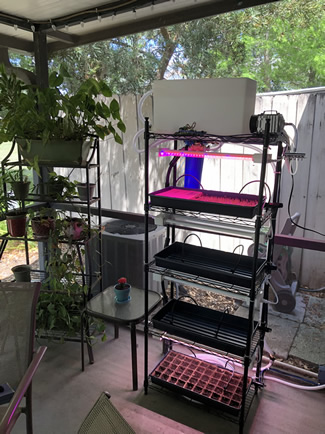
Project Overview
The primary objective of the Vertical Nursery Grower prototype was to design a compact, automated system capable of supporting a variety of plants in an urban environment. By integrating LED grow lights and a precision irrigation system, the project sought to create an ideal growing environment that maximizes yield while minimizing resource consumption.
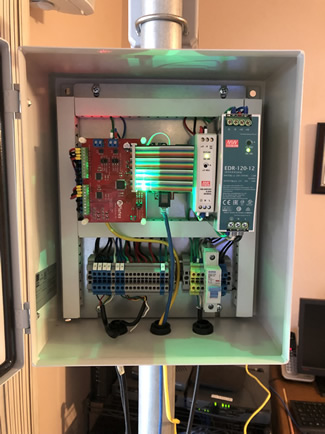
System Components
The prototype comprised several key components:
• Raspberry Pi: The central processing unit responsible for controlling the system.
• Node-red: An open-source flow-based development tool used for wiring together hardware devices, APIs, and online services.
• LED Grow Lights: Energy-efficient lights that provide specific wavelengths of light essential for photosynthesis.
• Irrigation System: A network of sensors and water delivery mechanisms to ensure precise watering of plants.
• Sensors: Including moisture sensors, light sensors, and temperature sensors to monitor the growing environment.
Design and Development
The design and development phase involved several critical steps:
1. Planning and Research
The team conducted extensive research to identify the optimal light spectrum for plant growth and the most efficient irrigation methods. This phase also included selecting the appropriate sensors and components to ensure accurate monitoring and control.
2. Hardware Integration
The Raspberry Pi was chosen for its versatility and ease of use. It served as the brain of the system, processing data from various sensors and controlling the LED lights and irrigation system. Using GPIO pins, the team connected moisture sensors, light sensors, and temperature sensors to the Raspberry Pi.
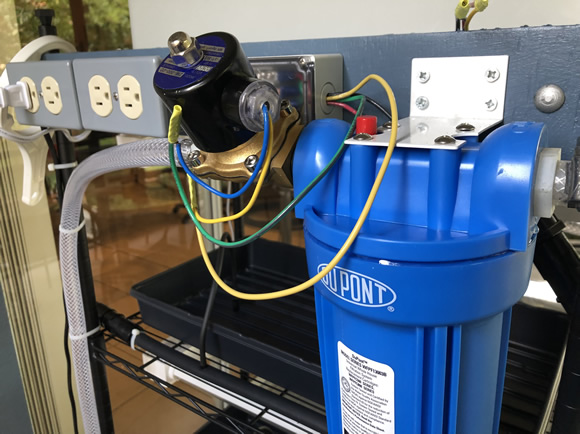
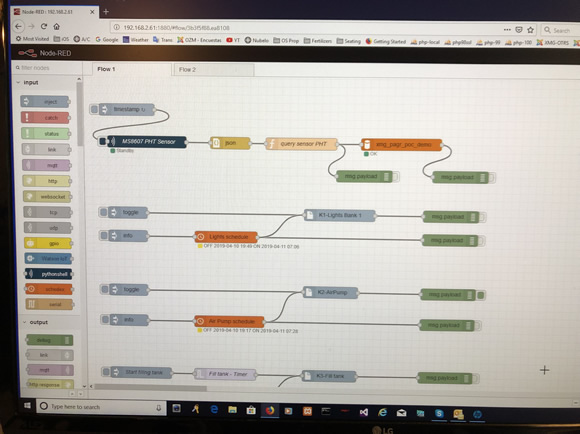
3. Software Development
Node-RED was employed to develop the control logic for the system. The flow-based interface of Node-RED allowed the team to create and test different control algorithms efficiently. The software was designed to automate the LED lights based on the time of day and the plants' light requirements. Similarly, the irrigation system was programmed to deliver water only when the soil moisture level dropped below a certain threshold, preventing overwatering and conserving water.
4. Prototype Assembly
The components were assembled into a vertical structure, with multiple tiers to maximize space utilization. Each tier was equipped with LED lights and irrigation nozzles, controlled by the Raspberry Pi. The sensors were strategically placed to monitor environmental conditions at different levels of the structure.
5. Testing and Optimization
The prototype underwent rigorous testing to ensure all components functioned correctly. The team fine-tuned the control algorithms based on the data collected from the sensors, optimizing the light and water delivery to promote healthy plant growth.
Results
Enhanced Plant Growth
The automated LED lighting system provided precise light wavelengths necessary for photosynthesis, resulting in robust plant growth. The ability to control the light spectrum and intensity according to the plants' needs significantly improved yield and quality.
Efficient Water Usage
The precision irrigation system, controlled by real-time soil moisture data, minimized water wastage. By delivering water only when needed, the system conserved resources and ensured optimal hydration for the plants.
Scalability and Flexibility
The modular design of the Vertical Nursery Grower allowed for easy scalability. Additional tiers could be added to expand the growing area without requiring significant changes to the existing setup. The system's flexibility also made it suitable for various plant species, accommodating their unique light and water requirements.

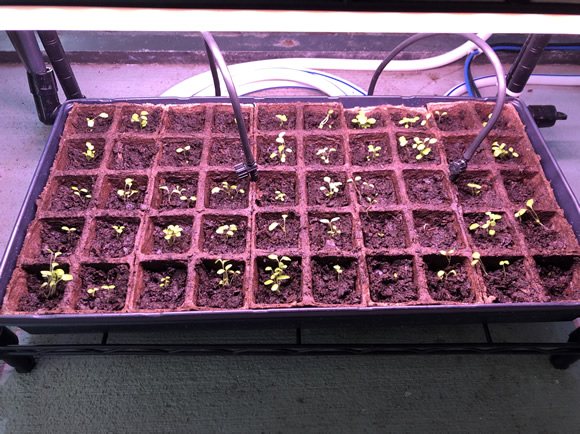

Conclusion
The Vertical Nursery Grower prototype demonstrated the potential of integrating technology into urban farming practices. By utilizing Raspberry Pi and Node-RED for automation, the project achieved a highly efficient and scalable solution for indoor plant cultivation. The success of this prototype highlights the importance of innovative approaches in addressing the challenges of urban agriculture and ensuring sustainable food production for the future.
Future Directions
The next steps for this project include:
• Expanding the prototype to include more plant species and growing conditions.
• Integrating advanced data analytics to further optimize growth parameters.
• Exploring commercial applications and partnerships for large-scale urban farming implementations.
